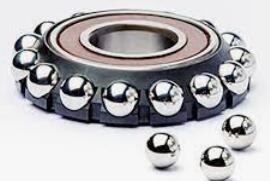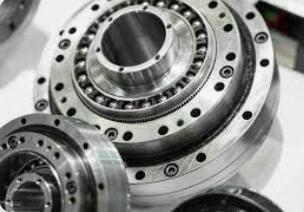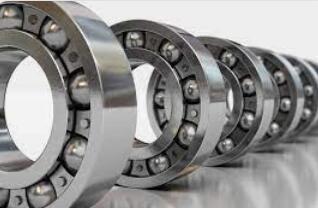What Are Ball Bearing Balls?
Who’d think that an essential glue to the massive machinery industry is a set of tiny balls?
If you think so, then you are one of the few knowledgeable people.
If not, it’s fine. Ball bearing balls are easily missed.
Besides their obvious size, bearing balls are basically hidden from sight.
The perfect science of bearing balls is responsible for their efficiency, security, and durability.
Digging into the science of this invention can provide bearing buyers the high purchasing advantage.
Although bearings are almost completely alike, they greatly vary in terms of function, design, material, size, and many more.
If you’re all set, then join me in this article as we delve into the world of bearing balls.
What are Ball Bearing Balls?

At its core, a ball bearing ball is a small, accurately-designed sphere that plays an important role for ball bearings.
Bearing balls, in turn, serve to eliminate friction and ensure smoothness in the rotation of any operation.
These operations vary from the mundane home appliances to the more massive aerospace, automotive, and motor machines.
Composition and Materials
The balls’ fundamental building blocks are specifically chosen for these abilities – durability, strength, and resistance to wearing.
The typical materials that compose the balls include chrome steel and stainless steel, both recognized for their hardness and corrosion resistance.
In recent years, ceramic materials such as silicon nitride have gained prominence due to their unique properties, including lower density, higher hardness, and resistance to thermal expansion.
The choice of material is crucial as it determines the ball's ability to withstand the operating conditions of the machinery it serves.
Whether enduring high-speed rotations, heavy loads, or corrosive environments, the material composition of the ball bearing ball must align with the specific demands of the application.
The Anatomy of Precision
Its precision in engineering is what makes the balls a super-efficient invention.
Manufacturers of the tool utilize high-tech factory techniques to ensure spotless finished products.
Computer numerical control (CNC) machining, for instance, is employed to ensure that each ball is uniform in size, perfectly round, and possesses a smooth surface finish.
Precision, in this case, encompasses both the manufacturing processes and tight quality control protocols observed in the factory.
Finally, automated scanning, filtering, and inspection systems are installed to see that every ball exacts the set standard to the tee.
The pursuit of precision is not merely a technical detail; it is the bedrock on which the reliability and efficiency of the balls rest.
The Role within Ball Bearings
The primary role of the balls is to optimize rotation within ball bearings – a seamless one at that.
A ball bearing usually consists of an outer race, an inner race, and the ball bearing balls held between them.
The races, often circular tracks or rings, guide the movement of the balls, distributing the load evenly and minimizing friction.
As crucial elements for rotation, the balls decrease the sliding friction that would otherwise occur between the surfaces of the races.
In the absence of friction, machine sustainability (premature wearing prevented) and optimization are guaranteed.
Versatility in Applications
The best of the balls is their versatility across varied operations, fitting, and placement.
If there’s one thing you should look for a ball, that would be its adaptive quality.
In the automotive sector, for instance, balls support the smooth rotation of several engine parts, gearbox components, and wheels.
In the aerospace industry, where safety and precision are a paramount, balls ensure the flawless operation of the components of an aircraft.
What is the science behind ball bearing balls?

The science behind the balls’ functionalities are as follow:
Friction-Reduction
Balls address this challenge by rolling between the races rather than sliding.
Rolling friction is significantly lower than sliding friction, allowing for more efficient energy transfer and minimizing wear on the components.
The small contact points between the balls and the races distribute the load evenly, further reducing the risk of localized wear.
Load Distribution
Balls are effective in distributing loads evenly across the races. At the onset of load pressure, the balls evenly spread the direction of the force across the bearing surface.
As a result, load pressure is not concentrated only in one point. This equal distribution of load pressure contributes to the longevity of the bearing and the machinery it serves.
Precision Tolerance
The precision required and indicated in the production of the balls can be measured in tolerance levels.
Tolerance is the allowable deviation from a specified dimension, making sure that each ball is consistent in shape and size.
High tolerance levels are crucial in keeping the bearing system integrity intact.
On the other hand, deviations in size or shape could lead to uneven distribution of load, compromised performance, and increased friction.
Materials Engineering
The selection of materials for the balls is another defining aspect of their design.
Vast machinery operations demand that different material properties and advancements be exploited into the tool.
Chrome steel has since served as a main material for the balls given its particular hardness and resistance to wearing.
For corrosion resistance, stainless steel ranks as another superior material.
Ceramic materials, on the other hand, offer a unique set of properties, including lower density and higher hardness, leading to reduced weight and increased durability.
The strategic combination of material properties with precision engineering results in the balls that meet the specific demands of their intended applications.
What are its applications and impacts?

The applications and impacts of the balls are as follow:
Automotive Industry
The automotive sector has obviously benefitted and continues to benefit from the ball products.
From the wheel hubs to the transmission systems, the balls contribute to the smooth and efficient operation of vehicles.
In wheel bearings, they endure the forces associated with steering, acceleration, and braking, ensuring a comfortable and safe driving experience.
Aerospace and Aviation
Precision and reliability are paramount in aerospace and aviation applications.
Ball bearing balls are integral to the functionality of components such as aircraft engines, landing gear systems, and control surfaces.
Their ability to withstand high speeds and dynamic loads makes them crucial in ensuring the safe and efficient operation of aircraft.
Manufacturing and Industrial Machinery
The manufacturing sector relies heavily on ball bearing technology to facilitate the smooth operation of industrial machinery.
From conveyor systems to robotic arms, the balls play a vital role in minimizing friction and supporting the heavy loads associated with manufacturing processes.
Their adaptability to diverse conditions makes them indispensable in this dynamic environment.
Medical Devices
In the realm of medical devices, where precision is critical, the balls find applications in various instruments.
From surgical equipment to diagnostic devices, these miniature components contribute to the precise movement and operation of delicate medical tools.
The reliability and precision of ball bearing balls in this context are vital for ensuring the success of medical procedures.
Consumer Electronics
The consumer electronics industry benefits from the versatility and precision of ball bearing balls in various applications.
In everything from computer hard drives to electric fans, these components contribute to the efficiency and reliability of rotating elements.
Their silent operation and longevity make them ideal for enhancing the user experience in electronic devices.
What are some of its innovations and future trends?
Some of its innovations and future trends are as follow:
Hybrid Ball Bearings
The quest for continuous improvement has led to the development of hybrid ball bearings.
These bearings combine traditional materials like steel with advanced ceramics, creating a hybrid that leverages the best properties of both.
Hybrid ball bearings aim to reduce friction even further, increase durability, and enhance overall performance.
The combination of steel races with ceramic ball bearing balls has proven effective in demanding applications where optimal performance is crucial.
Advanced Coatings
Ongoing research in materials science has led to the exploration of advanced coatings for ball bearing balls.
These coatings may include nanocomposites, polymers, or even diamond-like carbon.
The goal is to further enhance the wear resistance of the bearing balls, extending their lifespan and reducing the need for frequent maintenance.
Smart Bearings
The integration of sensor technology into bearings is another avenue of innovation.
Smart bearings, equipped with sensors, can monitor factors such as temperature, vibration, and load distribution.
This real-time data enables predictive maintenance, allowing for proactive measures to be taken before a component fails.
The implementation of smart bearing technology has the potential to revolutionize maintenance practices, increase overall system reliability, and reduce downtime in industrial settings.
Conclusion
The often-overlooked ball bearing balls basically holds machinery together.
A tool made from precision and flawlessness, the quality of the ball bearing balls determine the performance of the machine.
Whether it be an automotive, aerospace, and motor machine, bearing balls are expected to be of utmost design.
Learning about this tool based on its impact and applications, innovations, material composition, and its overall science provide us a glimpse into the complex elements of machinery.
Ultimately, further knowledge on the balls provide operators significant considerations in choosing the right balls for their needs.





